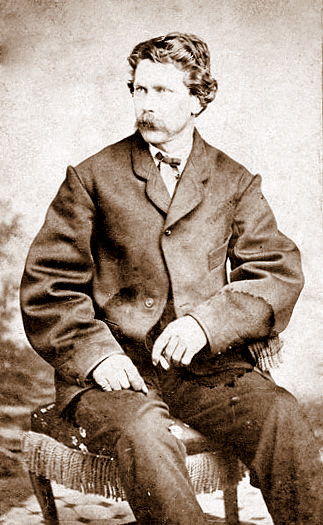The definition for Visual Anthropology as taken from the Centre of Visual Anthropology in Moscow, Russia reads;
Plainly put, visual anthropology is exactly what its name suggests - using visual representations to capture, document, and record information about any particular segment of any given population. The name an also be deceiving however, because it seems like any artist can call him or herself a "Visual Anthropologist." Do not be fooled, there is also extensive research and writing involved in producing a final report. However, Visual Anthropologists use aids such as photography, paintings, and even video to document their findings." A cultural activity where cinema art, humanities and information technologies interact to receive and include in social practice visual information on ethnic traditions to perform dialogue of cultures."
Visual anthropology uses all the arsenal of contemporary information means, cinema art and humanitarian scholarship. It seems to be one of the most effective means to prevent ethnic and religious conflicts. It aims at preserving images of little known and vanishing cultures, showing their specificity and universal essence, dialogue between alienated worlds.
Synthetic nature of Visual Anthropology which unites expression of contemporary art and humanitarian ideas provides interest not only of professionals but also of the broader circle of viewers intrigued by historical destinies of their family, their people, their world." (Kasparova, 2012)
The field of Visual Anthropology gives insight into other cultures and can help us to better understand these individuals and their society. Visual Anthropology does not only use photography as a visual means, it also uses film, which is commonly referred to as ethnographic film.
"These films
are valuable in revealing a more rounded representation of the issues that
anthropologists normally investigate - particularly with respect to ritual,
music, dance and other areas where a purely written description cannot convey
the richness of the experience" (Banks). Many Professors of anthropology have also found film
to be a great way to convey a sense of the work that anthropologists actually
do in the field.
However, visual anthropology is much more than ethnographic film. It encompasses a broad study of visual systems. Most anthropologists produce visual representations in the course of their work through photographs, film, maps, and diagrams, these are used to explain that all societies make visible aspects of their social life and their cultural understandings. Visual anthropology is concerned with understanding the production and consumption of all these forms. Visual anthropology overlaps with the anthropology of art, but also includes the study of local photography and television and film production (Banks)."
However, visual anthropology is much more than ethnographic film. It encompasses a broad study of visual systems. Most anthropologists produce visual representations in the course of their work through photographs, film, maps, and diagrams, these are used to explain that all societies make visible aspects of their social life and their cultural understandings. Visual anthropology is concerned with understanding the production and consumption of all these forms. Visual anthropology overlaps with the anthropology of art, but also includes the study of local photography and television and film production (Banks)."
In 1984 the Society for Visual Anthropology was founded, this society
promotes the use of images for the description, analysis, communication and
interpretation of human behavior. The Society encourages the use of media, including still
photography, film, video and non-camera generated images, in the recording of
ethnographic, archaeological and other anthropological genres. Members examine
how aspects of culture can be pictorially/visually interpreted and expressed,
and how images can be understood as artifacts of culture. Historical
photographs, in particular, are seen as a source of ethnographic data,
expanding our horizons beyond the reach of memory culture. The society also
supports the study of indigenous media and their grounding in personal, social,
cultural and ideological contexts, and how anthropological productions can be
exhibited and used more effectively in classrooms, museums and television (SVA,2014).
Some of the anthropologists I have found that have practiced visual anthropology include,
John Collier, Jr. who was an American anthropologist and leader in the fields of Visual anthropology and Applied anthropology. "His analysis and use of still photographs in ethnography
led him to significant contributions in other sub-fields of
anthropology, especially the applied anthropology of education. His
book, Visual Anthropology: Photography as a Research Method
(1967) is one of the earliest textbooks in the field and is still
(revised 1986) in use today" (Biella, 2002). Collier published in 1967 a book called as Visual Anthropology: Photography as a Research Method. This was recognized as the first published use of the term 'visual
anthropology', this book and its second edition (co-authored with
Malcolm Collier) have remained important references in the field (Biella 2002). |
| John Collier via Peter Biella |
 |
| Margaret Mead. Photo credit: Wikipedia |
Timothy O’Sullivan, was a journalist who documented the interactions among settlers and Native Americans in the Old West. His ethnographic style and eye for detail, made an important effect to be authentic. "O’Sullivan was famous for not trying to romanticise the native American plight or way of life in his photographs and instead of asking them to wear tribal dress was happy to photograph them wearing denim jeans" (Confluey).
 |
| Timothy O'Sullivan. Photo Credit: Wikipedia |
Bibliography
Banks, Marcus. "Visual Anthropology." .
http://www.discoveranthropology.org.uk/about-anthropology/specialist-areas/visual-anthropology.html
(accessed July 16, 2014).
Biella, Peter. "The Legacy of John Collier Jr.." . http://online.sfsu.edu/biella/biella2002c.pdf (accessed July 17, 2014).
Braga de Mendonça, João Martinho. "John Collier, Jr.: A Visual Journey." . http://www.scielo.br/scielo.php?pid=S1809-43412012000200008&script=sci_arttext (accessed July 16, 2014).
CEM Productions. "John Collier, Jr.: A Visual Journey." . http://www.cemproductions.org/documentaries/johncollierjr.html (accessed July 17, 2014).
(SVA) Society for Visual Anthropology. "About the SVA." . http://societyforvisualanthropology.org/about/ (accessed July 16, 2014).
Wayne, Rachel. "Ethnography Photography of the Wild West." . http://anthropologyoffilm.wordpress.com/ (accessed July 16, 2014).

No comments:
Post a Comment